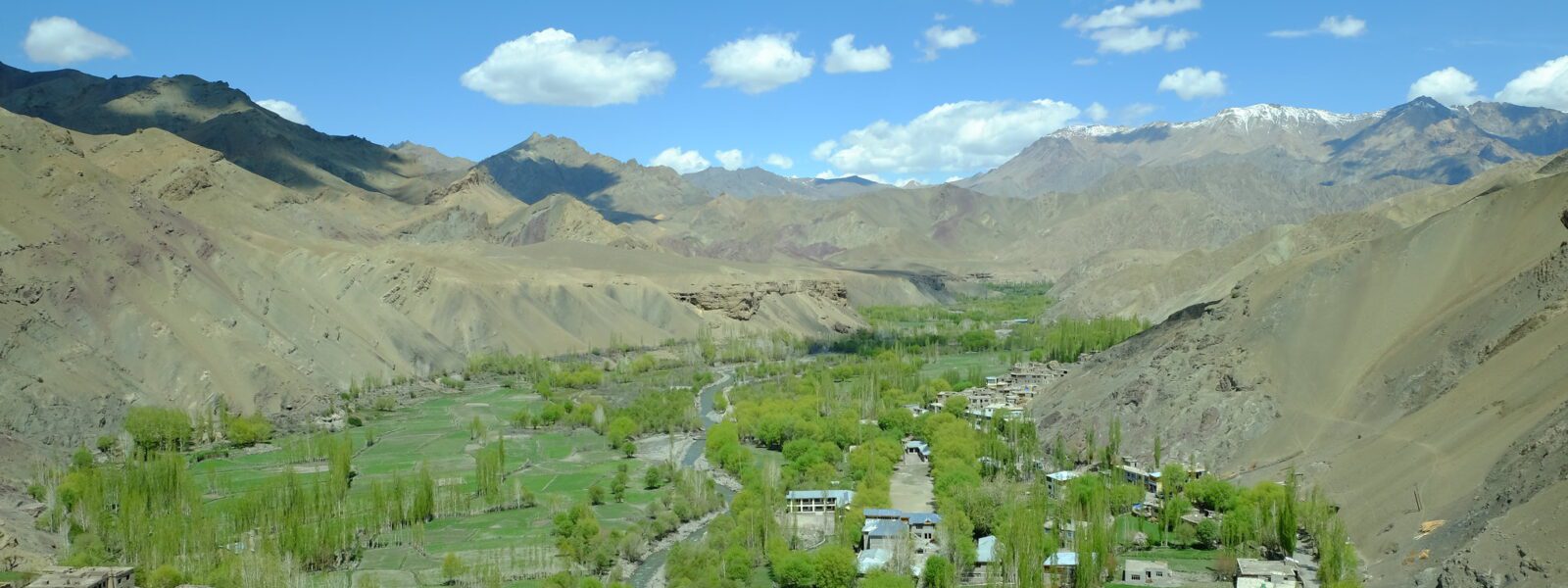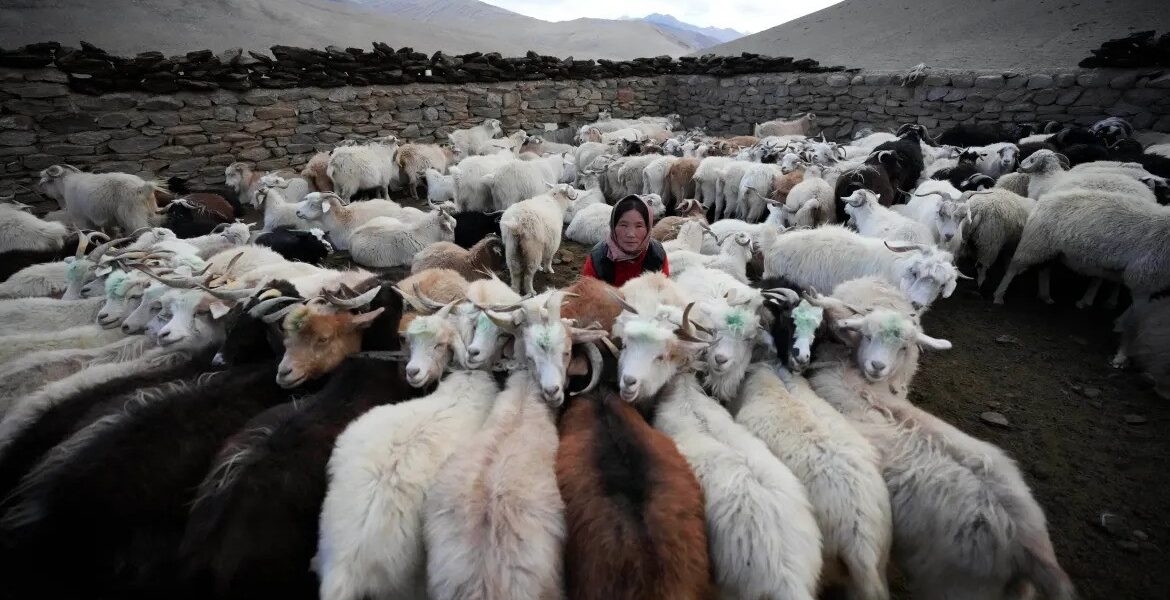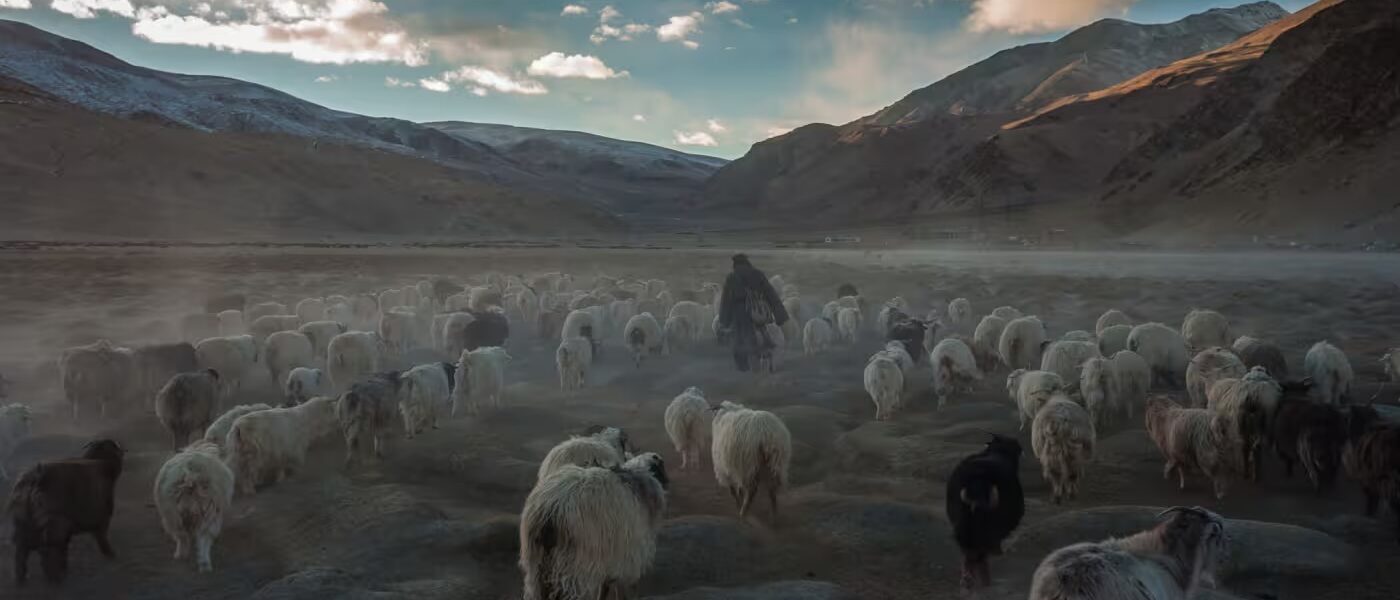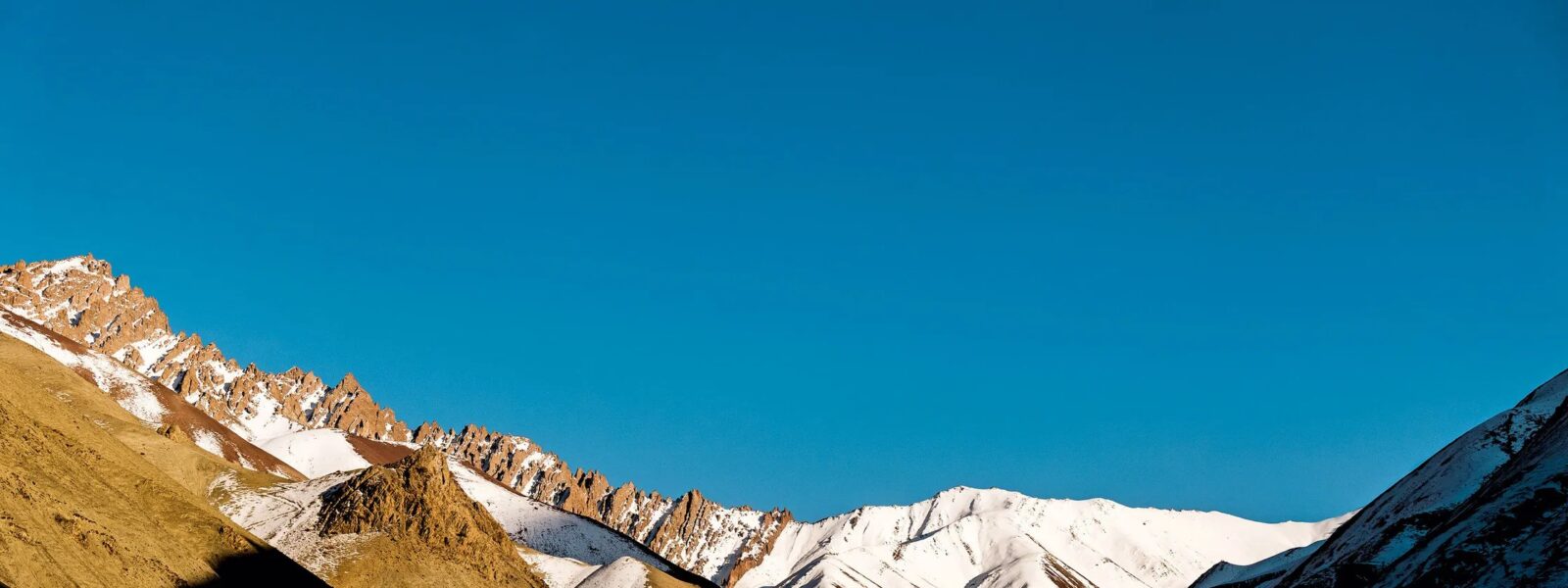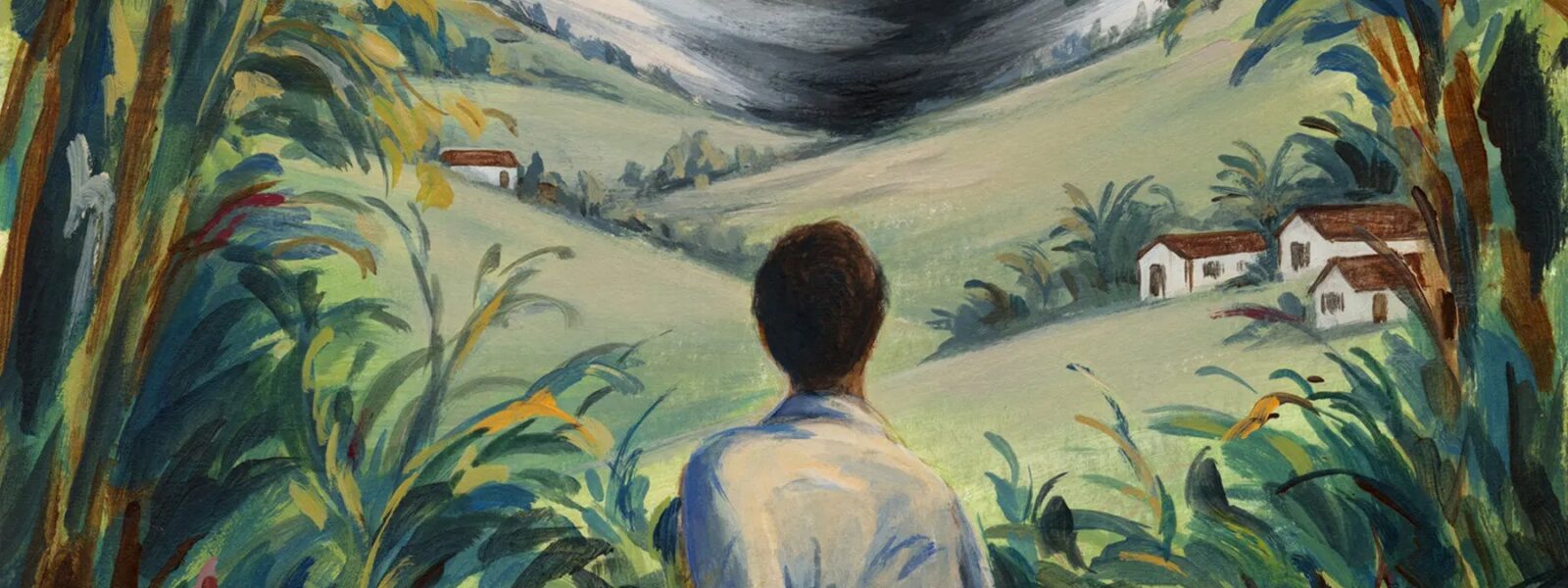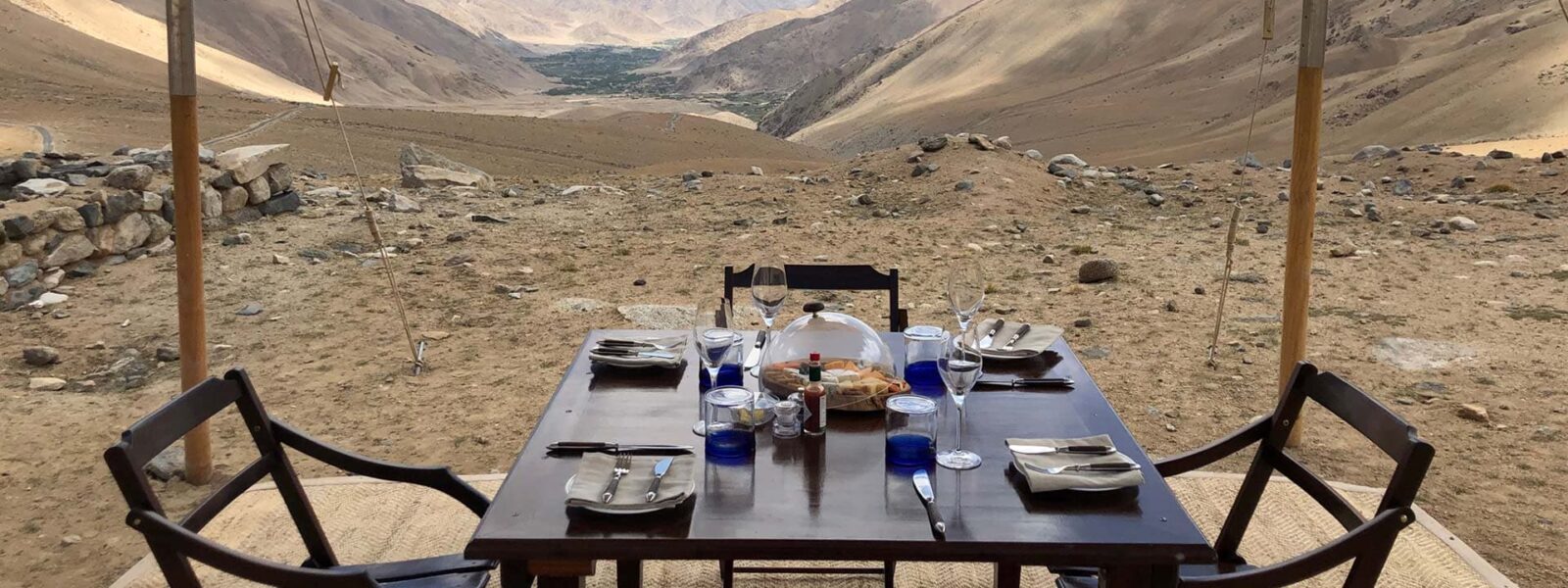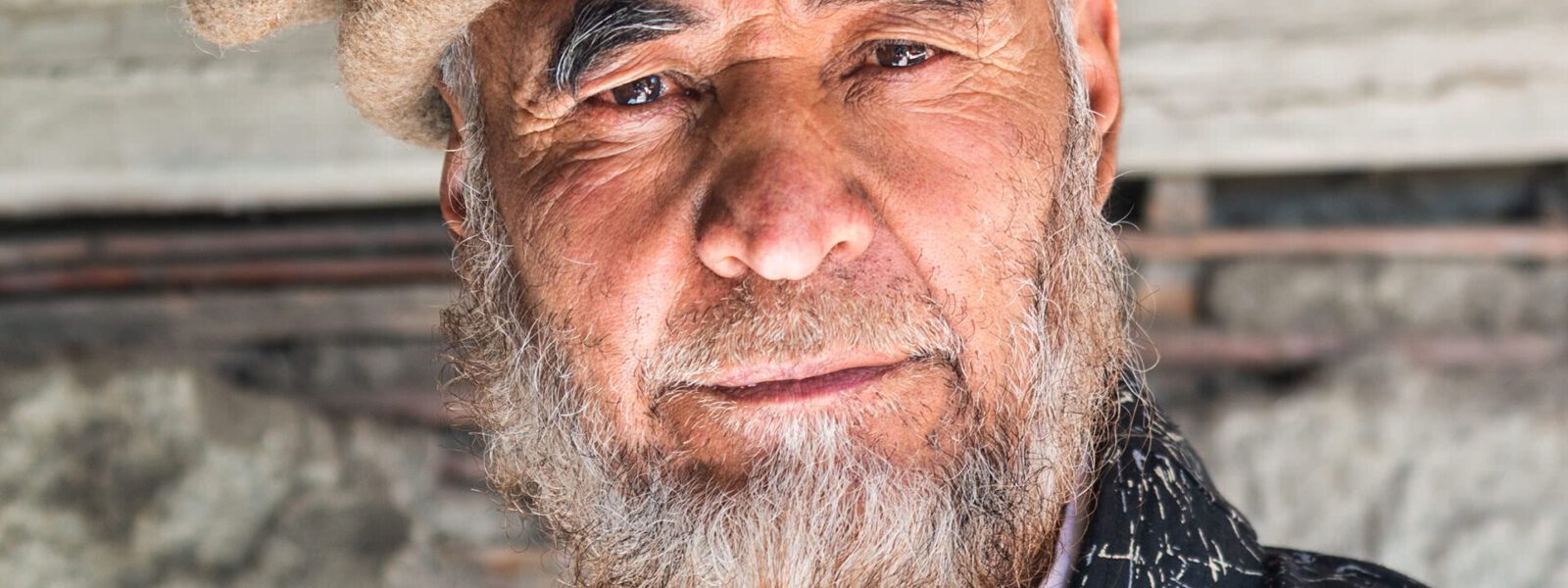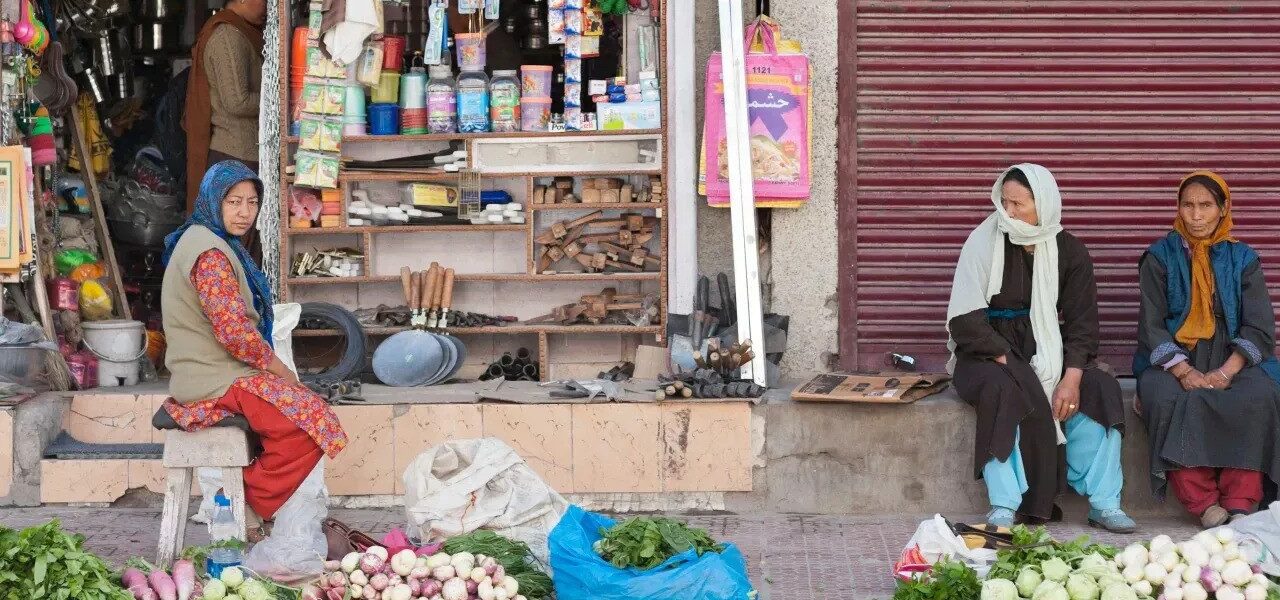A Turn Not on the Map: How I Found Chiktan by Chance
Sometimes, the most unforgettable journeys begin without a plan. I hadn’t meant to find Chiktan. In fact, I hadn’t even heard of it. I was on a quiet road trip through Ladakh, chasing the familiar promise of barren landscapes and craggy Himalayan passes. My destination was loosely defined—maybe Kargil, maybe somewhere farther—but fate had its own geography.
A few kilometers past Heniskot, I noticed a barely visible signboard at the edge of a bend. Time and mountain winds had stripped it of most of its paint, but one word lingered like a whisper from a past life: Chiktan. Something about it tugged at me, though I couldn’t say why. I turned right.
The asphalt gave way to pebbled dirt. My car creaked with every bump, as if protesting the detour. But then the valley opened up. Suddenly, the world shifted—apricot orchards bloomed in scattered patches, old stone houses clung to the slopes like stories etched into time, and ahead, the silhouette of a broken fortress—Chiktan Fort—stood in quiet defiance against the sky. I had entered a different Ladakh, one that doesn’t announce itself on brochures or bucket lists.
As I drove further, the village unfolded like a forgotten poem. Children played near irrigation streams, goats wandered freely, and an old man on a stone ledge raised his hand in greeting. There were no tour groups, no hotel signs, no café boards offering Wi-Fi. Just a rhythm of life untouched by urgency.
The road to Chiktan wasn’t just a path less taken—it felt like a portal. I didn’t know then that I was driving into a story that would live inside me long after I left. But I remember slowing down, lowering the window, and letting the air in—cool, silent, and scented with sun-dried grass and barley. I whispered the name to myself: “Chiktan.” It felt sacred somehow.
Travel has often rewarded me with grand spectacles. Snow peaks. Starry skies. Spinning prayer wheels. But here, it was different. It wasn’t the view that took my breath away—it was the feeling. A deep stillness. A presence. A sense that I was no longer passing through a village, but being quietly invited in.
So this, dear reader, is how I found Chiktan village in Ladakh. Or perhaps, how Chiktan found me.
First Glimpse of Chiktan: Stone, Wind, and Silence
The road narrowed until it seemed to melt into the earth. It wasn’t made for tourists—it was made for those who belong. Yet even as an outsider, I felt something more welcoming than any signpost: the stillness.
My first full glimpse of Chiktan village arrived without fanfare. There were no dramatic ridgelines or sweeping cinematic views, just the quiet poetry of life unfolding in a forgotten valley. The houses, built of stone and earth, stood low and strong against the wind. Their flat roofs bore haystacks and drying apricots, signs of a life anchored in rhythm, not rush.
Above it all loomed the ruins of Chiktan Fort, its fractured walls like ribs of a sleeping giant. I pulled over and stepped out, letting the silence settle around me like a soft shawl. A shepherd passed with his flock, his weathered face unreadable but his nod kind. There were no horns, no markets, no chatter—only the wind brushing over barley fields and the occasional creak of wooden doors in the breeze.
What struck me wasn’t what Chiktan offered, but what it didn’t. No curated experiences. No souvenirs. Just the unfiltered reality of a remote Himalayan village, untouched by the noise of modern travel. And that was its magic.
Apricot trees leaned gently over crumbling stone walls, their pink blossoms like the last notes of spring’s lullaby. Donkeys meandered calmly past hand-built water channels. Children played with tin cans, their laughter the only soundtrack in a place where time had stopped.
I wandered through narrow lanes without a destination, following the sound of a prayer bell or the scent of freshly baked bread. At one corner, I found a small group of elders sipping butter tea under a wooden veranda. They didn’t ask where I was from. They just scooted over, smiled, and offered a seat.
There is a kind of wealth here that can’t be priced—cultural richness passed from hand to hand, generation to generation. It lingers in the way homes are built, in the stories told by weathered faces, and in the resilience of a community that has thrived in silence.
That day, I didn’t take many photos. I didn’t want to interrupt the moment with a lens. Instead, I listened—to the wind, to the stones, to the hush between footfalls. Chiktan was not a place to capture. It was a place to be absorbed by.
If you’re searching for unexplored villages in Ladakh or longing to step away from the rush of itinerary-bound days, let Chiktan find you. But come without expectation. Come quietly. Because in Chiktan, silence speaks louder than any monument.
The House with No Sign: Ladakhi Hospitality and a Warm Stove
It started with a wave. A woman in a red headscarf stood at the threshold of a stone house, her expression somewhere between curiosity and kindness. I had paused to take in the view—barley fields shifting in the wind, mountains holding the village like cupped hands—when she beckoned me inside with a quiet gesture. No words. No obligation. Just an open door.
The house had no nameplate, no sign saying “homestay.” Yet in that moment, it became my home.
Inside, the air was warm with the scent of dried herbs, yak butter, and woodsmoke. A blackened kettle hissed gently on a metal stove known as a thap oven, its pipe disappearing into the low ceiling. Her husband, a man with sun-worn cheeks and steady hands, nodded and resumed cutting wood with measured grace. Their granddaughter giggled behind a curtain, peeking out every few seconds to steal glances at the stranger in their sitting room.
They didn’t ask me where I was from until much later. First came the tea—salty, buttery, oddly comforting. Then came bowls of steaming rice with apricot stew, and stories told with eyes, hands, and smiles more than words. Hospitality here wasn’t a service. It was instinct.
There was no Wi-Fi, no switch for a heater, and certainly no QR code for online reviews. But I have never felt more connected, more welcomed by a Ladakhi family, than in that small sunlit room lined with rugs and prayer flags.
When night fell, they offered me a place to sleep in the adjoining room, where thick quilts piled high against the cold. I fell asleep listening to the crackle of wood in the stove and the gentle murmur of the family speaking Ladakhi under their breath—rhythmic, musical, safe.
In cities, we often measure comfort by convenience. But in Chiktan, comfort meant warmth offered without question, silence shared without awkwardness, and the deep, grounding sense of being included in a world completely different from your own.
This wasn’t just a place to sleep—it was a chapter in a story I hadn’t realized I was writing. A place where I experienced authentic Ladakh village life, not curated for outsiders, but lived for centuries in quiet resilience.
If you’re searching for a homestay, you won’t find signs here. But if you arrive with openness and patience, the right door will open. And behind that door, you’ll find more than accommodation. You’ll find heart.
Faith and Time: Chiktan’s Buddhist Heartbeat
On my second morning in Chiktan, my hosts mentioned something almost in passing—there was one Buddhist family in the village, they said. Just one. A quiet nod to a spiritual tradition that had once echoed more broadly through these valleys, now held carefully within the walls of a single home.
I felt a gentle urgency to find them. Not out of religious curiosity, but because I sensed there was a story waiting to be heard—not told loudly, but whispered through time.
The path to Kukarchey, where the family lived, was narrow and unpaved. Apricot trees swayed overhead as I walked past stone granaries and quiet courtyards. It was as if each step brought me closer not just to a house, but to a fragment of living history.
I found it at the edge of a ridge—a simple Ladakhi house with faded prayer flags fluttering from its roof. An elderly woman welcomed me with hands pressed together and a smile that seemed to have weathered many winters. Her name was Tsering Dolma. Inside, the walls were lined with thangkas, old photographs, and the gentle presence of silence.
Behind the house stood a small gonpa—a private Buddhist chapel, nearly 400 years old. It was cool and dim inside, lit by shafts of light that slipped through cracks in the wooden beams. A butter lamp flickered near a statue of Chenrezig, and I felt time slow down.
Tsering Dolma and her son, the only practicing monks in this remote pocket of Kargil, spoke of devotion not as obligation but as rhythm. Every morning before dawn, they turned the prayer wheel, lit incense, and whispered mantras—quietly sending wishes into the wind. They did not expect visitors. They did not need them.
What moved me most was not the rarity of their faith, but the tenderness with which it was preserved. In a Muslim village in Ladakh, where daily life flowed around a different set of rituals, this family kept their own flame alive—not in opposition, but in harmony.
Faith, here, was not something to be proclaimed. It was something you lived, like the planting of barley or the turning of seasons. I was reminded that cultural richness often hides in the margins—in the quiet persistence of those who continue without recognition, without spectacle.
As I left, I turned one last time to look at the little gonpa. The mountains stood behind it, solid and eternal. And I realized: this was the true heart of Chiktan. Not in its architecture or landscapes, but in its layers of belief, gently held and passed on like secrets wrapped in prayer.
For those who seek more than views—who long to understand the soul of a place—walk slowly through Chiktan. And listen.
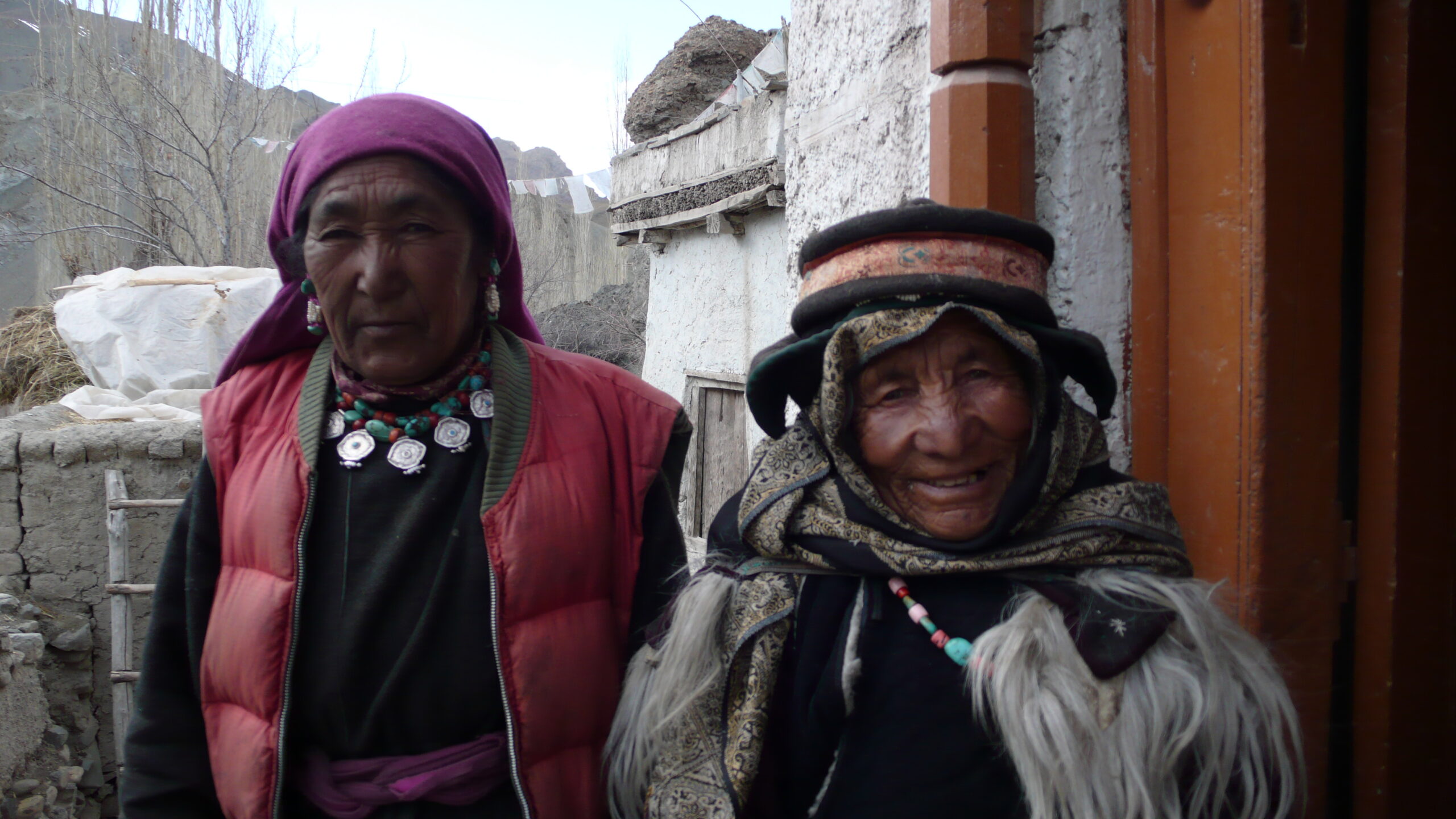
A Storybook Village Between Stone and Sky
In Chiktan, time doesn’t pass. It lingers.
Each morning, I woke to the sound of footsteps on stone—soft, deliberate, unhurried. Outside, a boy guided a small flock of sheep down a narrow path, whistling a tune I didn’t recognize but somehow felt I knew. Above us, prayer flags danced in the breeze like faded whispers of old stories.
There was something almost unreal about the way the village moved—like a page torn from a forgotten fairytale. And yet, this wasn’t fantasy. It was simply life in a storybook Himalayan village, carried out at the natural pace of seasons and soil.
A woman knelt beside a water channel, rinsing vegetables under glacial melt. Children darted barefoot between haystacks, their laughter echoing through the valley. A grandmother dozed in the sun, her head resting on a woven basket of apricots, her breathing as slow and steady as the wind.
I sat by a small ridge, watching the village from above. The view wasn’t grand in the usual sense. No jagged peaks demanding attention. No landmarks vying for camera lenses. But in that moment, it felt more beautiful than anything I had seen in Ladakh.
This wasn’t a place to “do” things. There were no checklists, no excursions, no curated experiences. And that’s exactly what made it so powerful. Chiktan invited you to unlearn everything that modern travel had taught—to slow down, to listen, to be still.
In the rhythm of daily life—mending a roof, collecting firewood, grinding grain—I began to understand what it meant to truly belong to a landscape. Not to conquer it, not to consume it, but to be a part of it. This was high-altitude living in its purest form: raw, demanding, deeply connected.
And the villagers—resilient, warm, and wise—seemed to carry a knowledge that couldn’t be taught, only inherited. They had no interest in trends or travel blogs. Their stories lived in gestures, in shared meals, in quiet nods as the sun slipped behind the mountains.
For anyone drawn to slow travel in India, Chiktan is not a destination you plan. It’s a discovery that unfolds, a place that makes you question how you’ve been moving through the world.
There, between stone and sky, I found something I didn’t know I was missing: the silence of belonging, the freedom of slowness, and the joy of simply watching a village breathe.
Leaving Chiktan: A Village That Now Lives Inside Me
The morning I left Chiktan, the sky was a soft, pale blue. The kind of sky that makes you question why you would ever leave a place like this. Yet the bags were packed, the car idling gently on the dirt road, and the world outside the valley was waiting to reclaim me.
My host waved from the threshold, his hand slow and steady, his smile unchanging. We hadn’t shared many words, but the silence between us had built something sturdier than conversation. I hesitated—one last look at the apricot tree, the barley fields, the quiet ridge where I had watched the stars alone. I whispered a thank you, unsure if it was for them or the village itself.
As the road curved away and Chiktan disappeared behind a fold in the mountains, I felt something shift inside me. This wasn’t a souvenir I could pack. It wasn’t a memory I could edit into a photo album. It was a presence—a feeling stitched into the lining of my heart.
I’ve traveled to many corners of the world. I’ve seen dramatic vistas, UNESCO sites, world-famous landmarks. But nothing quite compares to the gentle weight that Chiktan village in Ladakh left on me. It wasn’t the scenery that changed me—it was the stillness. The human kindness. The echo of footsteps on stone and the scent of smoke curling up into Himalayan skies.
That’s the thing with places like this. They don’t scream to be noticed. They simply offer themselves to those willing to arrive with open hands and a quiet heart.
Even now, when I sit in noisy cities or scroll past glittering itineraries online, I think back to Chiktan. And I remember how it felt to wake up in a village that didn’t ask me to be anything but present. That gave me space to feel, to breathe, to soften.
It was more than a trip. It was a kind of homecoming—to something I had lost in the speed of modern life.
If you’ve ever longed for an emotional travel experience in Ladakh, or dreamed of a place that doesn’t try to impress you but gently transforms you, let Chiktan find you. Come without expectation. Stay with humility. And leave knowing you’ve been changed.
Because some life-changing travel moments don’t come with fanfare. They come with the scent of woodsmoke and the hush of barley swaying in the wind.
And long after you’ve left, they stay.
If You Find Yourself on That Road…
Not all journeys begin with a destination. Some begin with a question, a pause, or even a simple wrong turn that ends up being more right than you could have imagined. That’s how I found Chiktan—or rather, how Chiktan found me.
If you ever find yourself wandering through the folds of Ladakh, somewhere between Kargil and Leh, and you see a fading sign pointing toward a road that doesn’t seem to go anywhere—take it. Let your itinerary loosen its grip. Let curiosity drive, not the guidebook.
Chiktan doesn’t offer what most travelers are looking for. There are no hotels, no menus in English, no souvenir stalls. But for those searching for off-the-beaten-path villages in Ladakh, this little valley offers something infinitely rarer: authenticity.
Spring and summer (April to September) bring apricot blossoms and barley fields, while autumn paints the hills in gold. Winters are harsh, quiet, and deeply still—a time when stories move indoors and life folds into itself. Whenever you come, bring time. Bring openness.
To stay here, don’t search online. Instead, ask around in Leh or Kargil. Someone will know someone. That’s how it works here. Ladakh slow travel is not a service—it’s a relationship. A shared meal, a floor mattress, a window view that may just change your understanding of stillness.
Walk to the ruins of Chiktan Fort in the early light. Visit Kukarchey and greet the last Buddhist family tending their quiet chapel. Sit with a shepherd. Follow the irrigation channels. Let your feet find their own rhythm.
There are many places to visit near Chiktan Fort—but the village itself is the real destination. Not because of what you can see, but because of what you might feel. A pause. A return to slowness. A kind of home in a place where no one knows your name, but somehow welcomes your presence like it belongs.
So if you find yourself on that road—the one that disappears behind stone ridges and seems to lead nowhere—follow it.
And let Chiktan remind you that some of the most unforgettable places in this world aren’t found on maps, but in moments of stillness, offered quietly, generously, like an open door on a cold morning.
About the Author
Elena Marlowe is an Irish-born writer currently residing in a quiet village near Lake Bled, Slovenia.
She has spent much of her life weaving words between landscapes—whether wandering the coastlines of Ireland, the cobblestone towns of Central Europe, or the high-altitude villages of the Indian Himalayas.
With a background in cultural history and a deep love for slow, immersive travel, Elena’s essays seek the emotional truths hidden in quiet places.
Her writing has been featured in literary journals, travel anthologies, and whispered conversations in mountain teahouses.
She believes that some of the most beautiful stories are not the ones we chase, but the ones we stumble into—unexpected, unplanned, unforgettable.
You can often find her journaling by candlelight, sketching temple outlines on napkins, or listening to the silence of remote places that feel like home.

